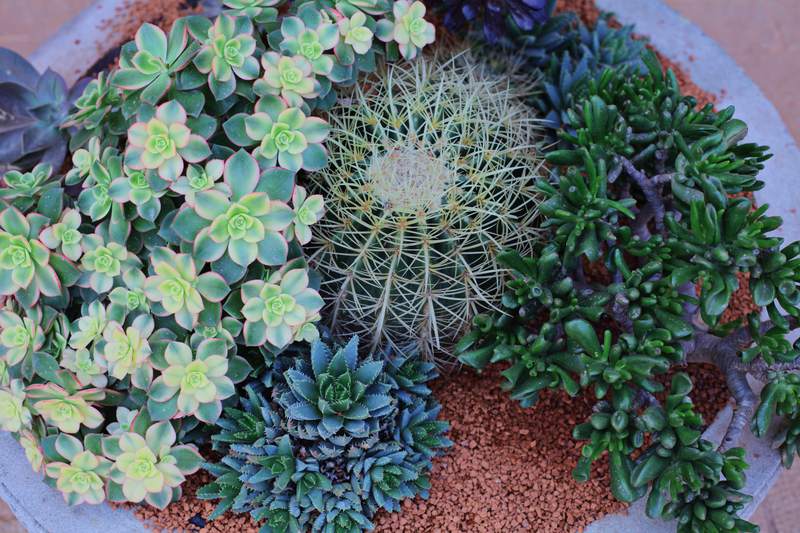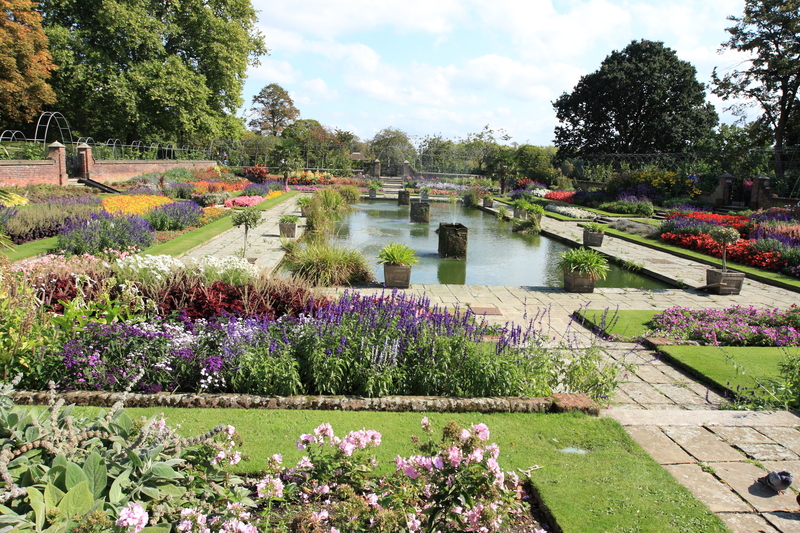Top Approaches to Combat Pesky Weeds
Posted on 26/06/2025
Top Approaches to Combat Pesky Weeds: The Ultimate Guide for Weed Control
Weeds can quickly turn a manicured lawn or thriving garden into an unsightly and struggling patch of green. No matter how experienced you are as a gardener or homeowner, battling these persistent plants is an ongoing challenge. Thankfully, there are a range of effective weed control methods that can bring relief and restore beauty to your landscape.
In this comprehensive article, we'll explore top approaches to combat pesky weeds. You'll discover both traditional and modern methods, from manual removal and mulching to clever organic strategies, cutting-edge chemical controls, and innovative prevention techniques. Whether you're managing a backyard vegetable bed, flower garden, or large lawn, you'll find actionable solutions tailored to your needs.
Understanding the Enemy: What Are Weeds?
Weeds are essentially unwanted plants that thrive in cultivated areas, competing with your selected plants for sunlight, water, nutrients, and space. Common pest species include dandelions, crabgrass, bindweed, chickweed, clover, and thistles. Knowing your enemy is a critical first step--some weeds emerge in spring (annuals), others persist for several years (perennials), and each demands a different management strategy.
Common Types of Pesky Weeds
- Annual Weeds - Complete their lifecycle in one season (e.g., chickweed, crabgrass)
- Biennial Weeds - Live for two years, flowering in the second year (e.g., wild carrot, bull thistle)
- Perennial Weeds - Survive for several years and can regrow from roots (e.g., dandelions, quackgrass, bindweed)

Approach 1: Manual Weed Control
There's truth to the saying: "A stitch in time saves nine." Regular, hands-on removal is often the most effective way to tackle weeds, especially when they first appear.
The Hand-Pulling Method
- Best For: Small gardens, raised beds, and landscaped areas
- How To: Pull weeds after rainfall (when soil is moist), grasp near the root, and gently tug out the entire plant, including roots
- Tip: Wear gloves to avoid thorns or skin irritation, and use a trowel for deep-rooted weeds
Hoeing and Cultivation
- Shallow Hoeing: Use a well-sharpened hoe to sever weeds from their roots just below the soil surface
- Effective For: Young, tender weeds that have not yet seeded
- Frequency: Weekly or biweekly, especially during spring and early summer when weeds grow fastest
Approach 2: Mulching for Weed Suppression
Mulching is a time-tested, eco-friendly method to control weeds while improving soil quality. A layer of mulch blocks sunlight, preventing weed seeds from germinating and emerging.
Types of Mulch to Use
- Organic Mulches: Straw, shredded leaves, wood chips, grass clippings, or compost
- Inorganic Mulches: Landscape fabric, plastic sheeting, gravel
Mulching Tips for Success
- Apply a 2-4 inch layer of mulch over bare soil, ensuring complete coverage
- Keep mulch a few inches away from plant stems or trunks to prevent rot
- Replenish organic mulch annually as it decomposes
Note: Mulching not only suppresses weeds but also improves soil moisture retention, temperature moderation, and organic matter content.
Approach 3: Smothering Weeds with Barriers
For stubborn or persistent weeds, smothering is a highly effective long-term strategy. This involves covering the soil with materials that block light, thereby eliminating weeds without the use of chemicals.
Common Smothering Materials
- Cardboard or Newspaper: Lay thick layers over undesired growth, overlapping edges and wetting them down
- Black Plastic Sheeting: Useful for large sections; heat intensifies weed kill
- Landscape Fabric: Durable and permeable barrier for ornamental beds and walkways
After several weeks, most weeds beneath the barrier will have decomposed, and you can plant directly into the newly cleared area for a fresh start.
Approach 4: Organic and Natural Weed Control Methods
Many gardeners seek organic weed removal methods that minimize the use of synthetic chemicals. These approaches use safe household items and natural substances to manage weed problems while keeping the soil and environment healthy.
Popular Natural Weed Control Techniques
- Boiling Water: Scalds and kills weeds on paths, driveways, or between patio stones
- Homemade Vinegar Spray: Mix white vinegar (5-20% acetic acid) with a few drops of dish soap and spray directly on leaves (effective on sunny days)
- Corn Gluten Meal: Works as a pre-emergent herbicide, inhibiting the growth of new seedlings
- Salt and Lemon Juice: Apply with care to cracks and crevices to prevent regrowth (avoid desirable plants)
Warning: Natural solutions can still affect soil health and desirable vegetation. Always spot-test and limit usage to problem areas.
Approach 5: Chemical Weed Control Options
When infestations are severe or time is limited, herbicides can provide rapid relief. Modern formulations offer targeted action with minimal risk when used responsibly.
Selective vs. Non-Selective Herbicides
- Selective Herbicides: Target specific weed species without harming grass or ornamentals (ideal for lawns)
- Non-Selective Herbicides: Kill any plant they contact (best for driveways, patios, or preparing a planting bed)
Key Points for Safe Chemical Use
- Always read and follow the manufacturer's instructions
- Apply on dry, windless days to prevent drift and runoff
- Wear gloves, long sleeves, and goggles for protection
- Avoid using around edible plants unless labeled safe for gardens
Tip: Integrated weed management combines careful, limited use of herbicides with physical removal or prevention for maximum effect.
Approach 6: Preventing Weeds Before They Start
An ounce of prevention is worth a pound of cure. The most effective weed management strategy focuses on stopping weeds before they get started. Consider these preventative tactics:
Proactive Weed Prevention Strategies
- Dense Planting: Grow plants close together to shade the soil and outcompete weeds for resources
- Healthy Soil: Well-amended, fertile soil helps chosen plants establish quickly and box out invaders
- Efficient Watering: Use drip irrigation or soaker hoses to deliver water directly to roots--avoid watering bare soil where weeds can sprout
- Monitor & Patrol: Walk your garden weekly to catch and remove weeds before they flower and seed
- Use Pre-Emergent Herbicides: Apply in early spring to prevent weed seeds from germinating
Integrated Weed Management: Combine Strategies for Best Results
Relying on one weed control approach is rarely enough for ongoing success. Integrated Weed Management (IWM) involves blending multiple tactics--from manual, organic methods to strategic chemical applications and smart prevention--to maintain a low-weed environment year-round.
Why Integration Works
- Reduces resistance to chemicals and mechanical control
- Minimizes environmental impact
- Improves long-term effectiveness
- Helps keep both annual and perennial weeds at bay
Specialized Approaches for Lawns, Gardens, and Paths
Winning the Battle on Lawns
- Mow High: Keep your grass a bit taller (3-4 inches), which shades soil and reduces weed germination
- Fertilize Wisely: Feed your lawn as needed to encourage dense turfgrass
- Overseed Bare Spots: Fill in gaps to crowd out new weeds
Weed Management in Vegetable and Flower Gardens
- Rotate Crops: Disrupt weed life cycles by moving crops each year
- Mulch Generously: Apply organic mulch after planting and replenish as needed
- Hand-weed regularly: Especially after rain or irrigation
Weeding Patios, Driveways, and Walkways
- Apply Boiling Water: Pour directly onto weed foliage for instant kill
- Use Non-selective Herbicide: For widespread or stubborn growth, especially in cracks
- Seal Joints: Fill cracks with sand or polymeric filler to prevent weed establishment

Timing and Consistency: Secrets to Weed-Free Spaces
Perhaps the most crucial factor in weed control is timing. Removing weeds before they flower or set seed can dramatically reduce future problems. Consistency--patrolling your yard or beds regularly throughout the growing season--prevents minor issues from escalating into major ones.
Conclusion: Take Control of Your Weedy Foes--For Good
Pesky weeds can be relentless adversaries, but they aren't invincible. With the best methods for controlling weeds--including manual removal, mulching, organic options, smart use of herbicides, and preventive care--you can reclaim your landscape. Remember to adapt your plan as the seasons and weed populations change, and don't be afraid to combine approaches for the most resilient, beautiful, and healthy outdoor spaces.
Let nature work with you, not against you--choose the weed control strategies that best fit your values and needs, and enjoy a lush, vibrant yard or garden all year long.

